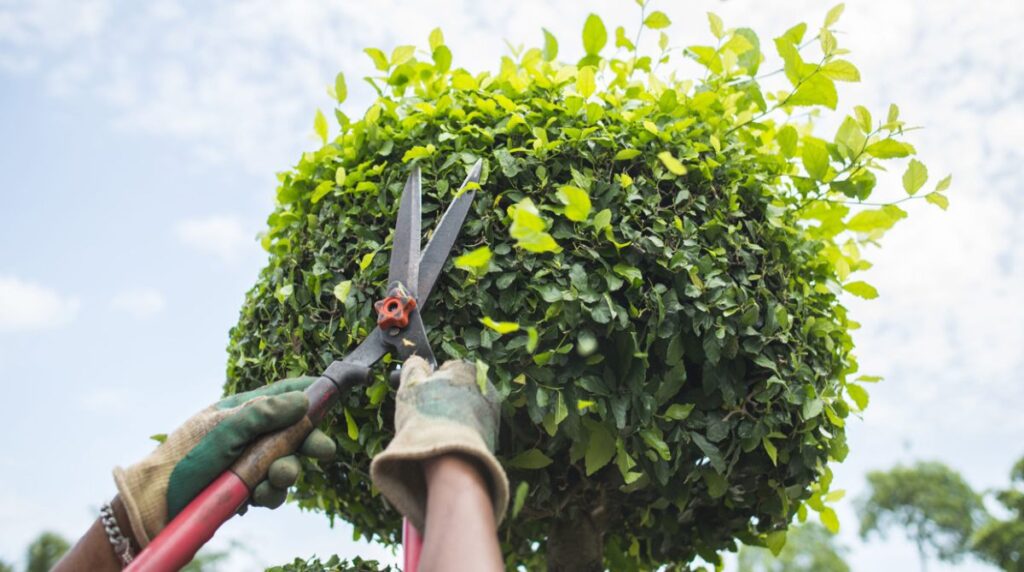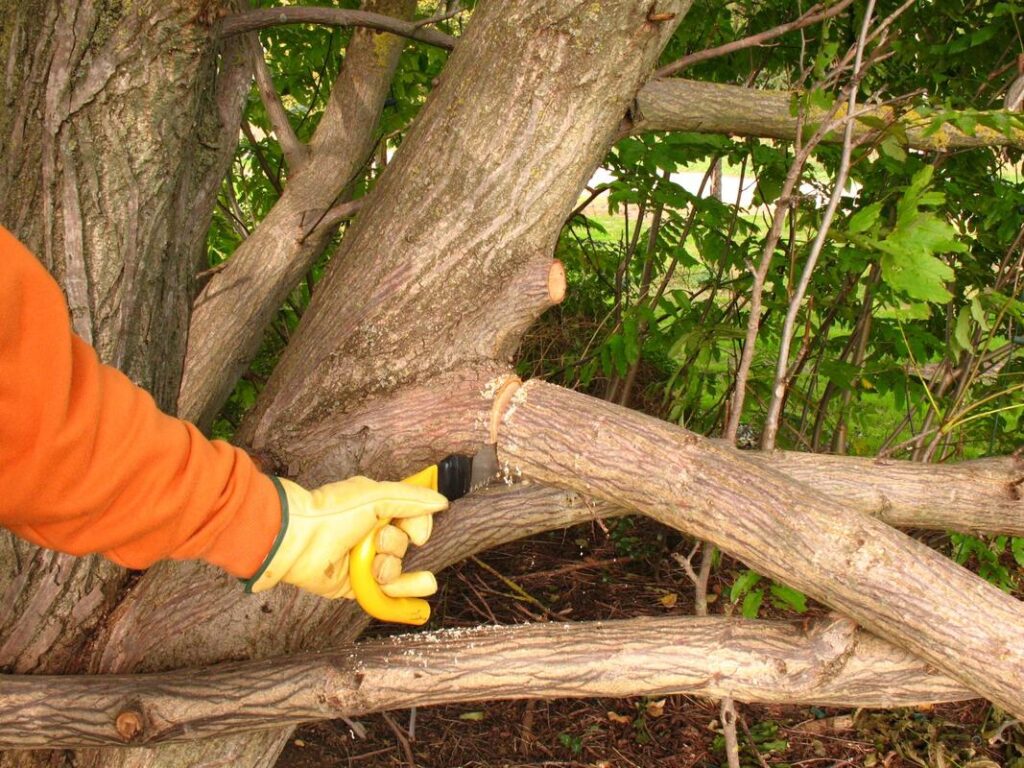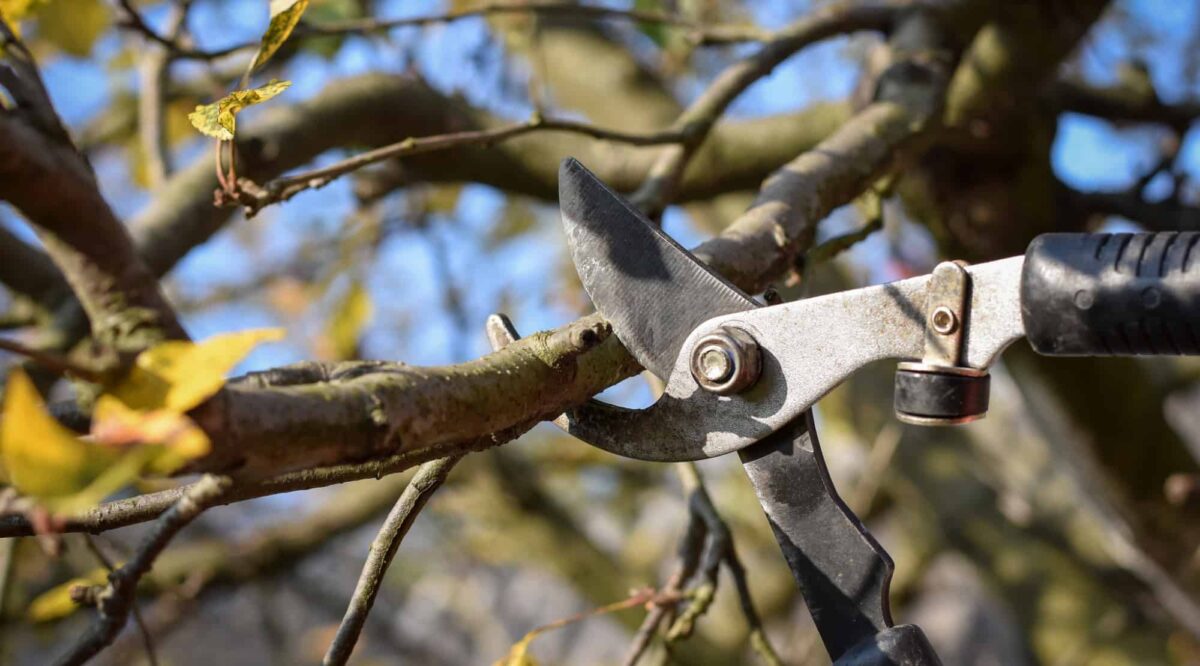Pruning is an essential aspect of tree care that plays a crucial role in promoting both tree health and aesthetic appeal. When done properly and at the right time, pruning can have numerous benefits for trees and the surrounding landscape. In this article, we will delve into the basics of pruning, the impact it has on tree health, the aesthetic benefits it offers, common misconceptions about pruning, and the best time to prune different types of trees.
Understanding the Basics of Pruning
Pruning is the deliberate removal of certain parts of a tree, including branches, shoots, or buds. It is done to shape and enhance the overall structure, health, and appearance of the tree. But why is pruning so important? Let’s explore the science behind pruning and the tools and techniques used for effective tree pruning service.
Pruning plays a vital role in maintaining the health and longevity of trees. When done correctly, it can help prevent disease, improve structural integrity, and promote vigorous growth. By removing dead, damaged, or diseased branches, pruning reduces the risk of infection and decay, allowing the tree to allocate its resources more efficiently.
Furthermore, pruning is not just a random act of cutting branches. It is backed by scientific principles and knowledge of plant physiology. By understanding how trees grow and respond to pruning, arborists can make informed decisions on which branches to remove and how to encourage healthy growth.

One important aspect of pruning is understanding the concept of apical dominance. Apical dominance refers to the tendency of the terminal bud, located at the top of the tree, to inhibit the growth of lateral buds below it. By selectively removing the terminal bud or certain branches, arborists can redirect the tree’s energy towards lateral buds, resulting in a more balanced and aesthetically pleasing structure. Visit https://greenteatoday.com/the-art-and-science-of-tree-pruning-when-and-how-to-trim/ to get about the art and science of tree pruning.
The Science Behind Pruning
Pruning helps trees allocate resources efficiently and promotes the development of strong, well-spaced branches. When a branch is pruned, the tree redirects its resources to other parts, stimulating growth and strengthening the remaining branches. This process is known as compartmentalization, where the tree forms specialized cells to seal off the wound and prevent the spread of decay.
Additionally, pruning can influence the direction of growth. By selectively removing branches that are growing in undesirable directions, arborists can guide the tree’s growth and shape it according to the desired form. This is particularly important in urban areas where trees may need to be pruned to avoid interfering with power lines, buildings, or other structures.
Tools and Techniques for Effective Pruning
To achieve optimal results, it is important to use the right tools and employ proper pruning techniques. Tools such as pruning shears, loppers, and pruning saws allow for clean and precise cuts, minimizing damage to the tree. It is crucial to use sharp and clean tools to prevent tearing or crushing the tree’s tissues, as this can lead to unnecessary stress and potential entry points for pathogens.
When pruning, it is important to follow the three-cut technique for larger branches. This technique involves making an undercut first, followed by a top cut a few inches further out from the undercut. Finally, the remaining stub is removed with a third cut, just outside the branch collar. This method helps prevent tearing and ensures a smooth wound closure.
Techniques like crown thinning, crown raising, and crown reduction are commonly used to shape the tree, improve airflow, and reduce the risk of limb failure. Crown thinning involves selectively removing branches to reduce the density of the tree’s canopy, allowing more light and air to penetrate through. Crown raising focuses on removing lower branches to provide clearance for pedestrians, vehicles, or structures. Crown reduction, on the other hand, aims to reduce the overall size of the tree by selectively removing branches from the outer portion of the canopy.
Overall, pruning is an essential practice in arboriculture that requires knowledge, skill, and careful consideration. By understanding the science behind pruning and using the right tools and techniques, arborists can help trees thrive, ensuring their beauty and benefits for generations to come.
The Impact of Pruning on Tree Health
Pruning goes beyond just shaping the tree; it has significant implications for tree health as well. By promoting growth and longevity, pruning enables trees to thrive and withstand environmental stressors. Moreover, it helps prevent disease and pest infestations, which can cause serious harm to trees. Let’s explore these benefits in detail.
When it comes to promoting growth and longevity, regular pruning plays a crucial role. By removing dead, dying, or diseased branches, pruning redirects the tree’s energy towards healthy growth. This redirection of resources allows the tree to focus on developing new, vibrant branches and foliage. As a result, the tree becomes more resilient and better equipped to handle various environmental challenges.
Furthermore, selective pruning can help shape the tree’s structure, ensuring proper weight distribution. This is particularly important in areas prone to storms or high winds. By removing branches that are at risk of failure, pruning reduces the chances of damage to the tree and surrounding property. It also enhances the tree’s stability, making it less susceptible to toppling over during severe weather conditions.
In addition to promoting growth and structural stability, pruning plays a vital role in preventing disease and pest infestations. Dead or diseased branches can become entry points for pathogens and insects, making the tree vulnerable to infections and infestations. By removing these branches through pruning, the risk of disease and pest problems can be significantly reduced.
Moreover, pruning enhances airflow and sunlight penetration within the tree’s canopy. This improved air circulation helps to create an unfavorable environment for disease-causing organisms. Adequate sunlight exposure also promotes the growth of beneficial microorganisms on the tree’s bark, which can help combat harmful pathogens.
It is important to note that proper sanitation practices should be followed during and after pruning to prevent the spread of diseases. Disinfecting pruning tools between cuts and disposing of pruned branches properly are essential steps in maintaining tree health.
In conclusion, pruning is not just about aesthetics; it is a crucial aspect of tree care that directly impacts tree health. By promoting growth, longevity, and structural stability, pruning allows trees to thrive in their environment. Additionally, it helps prevent disease and pest infestations, safeguarding the tree’s overall well-being. So, the next time you consider pruning your trees, remember the numerous benefits it provides beyond just shaping their appearance.

The Aesthetic Benefits of Pruning
In addition to promoting tree health, pruning plays a key role in enhancing the aesthetic appeal of trees and the surrounding landscape. Properly pruned trees can have a noticeable impact on the overall beauty and visual appeal of outdoor spaces. Let’s explore how pruning contributes to the aesthetic value of trees.
Enhancing Landscape Beauty
Well-pruned trees have a balanced and aesthetically pleasing appearance. By removing deadwood, crossing branches, and excessive growth, the tree’s natural form can be accentuated. This not only improves the tree’s health but also enhances its visual appeal. When trees are pruned properly, they become more visually appealing, creating a sense of harmony and balance in the landscape.
Furthermore, pruning can create a harmonious balance between trees and other landscape elements, such as buildings or garden features. By carefully shaping and trimming the branches, trees can be integrated seamlessly into the overall design of the outdoor space. This harmonization adds visual interest and enhances the overall beauty of the landscape.
Moreover, well-pruned trees can create stunning visual effects throughout the changing seasons. During spring, the newly pruned branches burst forth with vibrant blossoms, adding a splash of color to the landscape. In autumn, the carefully pruned trees showcase their brilliant foliage, creating a breathtaking display of warm hues. These seasonal transformations further enhance the aesthetic appeal of the trees and the surrounding environment.
Shaping Trees for Visual Impact
Pruning allows trees to be shaped and trained to fit their surroundings. It offers the opportunity to create unique focal points or showcase specific tree features. With careful and selective pruning, trees can be transformed into stunning works of living art, adding character and visual impact to any outdoor space.
By selectively removing branches, the tree’s natural architecture can be emphasized, highlighting its unique structure and form. This can be particularly effective in showcasing trees with interesting branching patterns or distinctive trunk shapes. Through skilled pruning techniques, such as crown reduction or crown raising, trees can be sculpted to create eye-catching focal points within the landscape.
Furthermore, pruning can be used to frame views or create visual pathways. By carefully shaping the canopy of a tree, it can be positioned to frame a picturesque vista or direct the viewer’s gaze towards a specific point of interest. This deliberate manipulation of the tree’s form adds depth and dimension to the landscape, creating a visually captivating experience for those who encounter it.
Additionally, pruning can be employed to manage the size and scale of trees in relation to their surroundings. By selectively removing branches or reducing the overall size of the canopy, trees can be kept in proportion with nearby structures or other landscape elements. This ensures that the trees do not overpower the space but instead contribute to a harmonious and visually pleasing environment.
In conclusion, pruning not only promotes tree health but also enhances the aesthetic value of trees and the surrounding landscape. Through careful and selective pruning techniques, trees can be transformed into living works of art, adding beauty, character, and visual impact to any outdoor space.

Common Misconceptions About Pruning
Despite the numerous benefits of pruning, there are some common misconceptions that can deter people from engaging in this vital tree care practice. Let’s debunk these myths and address any pruning fears that may exist.
Debunking Pruning Myths
One prevalent myth is that pruning will stunt a tree’s growth. However, when done correctly, pruning actually promotes healthy growth and improved structural development. Another misconception is that pruning can be done at any time without consequences. In reality, improper pruning or timing can have detrimental effects on the tree’s health and appearance. Understanding the facts behind pruning can help dispel these myths and encourage informed tree care practices.
Addressing Pruning Fears
Some people may have concerns about pruning due to the fear of damaging the tree. While improper pruning techniques can harm a tree, consulting with a certified arborist and using proper tools greatly reduces the risk of damage. Understanding the purpose and benefits of pruning can help alleviate these fears and encourage proactive tree care.
Best Time to Prune Different Types of Trees
Different tree species have unique growth habits and specific pruning requirements. Understanding the best time to prune specific trees is essential to maximize the benefits and minimize any potential negative effects. Let’s explore a seasonal pruning guide and species-specific recommendations.
Seasonal Pruning Guide
In general, pruning during the dormant season, when the trees are not actively growing, is preferred. This includes late winter or early spring before bud break. However, some trees, such as flowering ornamentals, may have different pruning needs and specific timing requirements. Consulting with an arborist or referring to a reliable pruning guide can ensure that pruning is done at the most appropriate time for each tree species.
Species-Specific Pruning Recommendations
Each tree species has unique growth patterns and characteristics that should be taken into account when pruning. For example, fruit trees may require specific pruning techniques to improve fruit production, while conifers may benefit from selective pruning to maintain their desirable shape. Understanding the specific needs of each tree species will help achieve optimal pruning results and promote long-term tree health.In conclusion, pruning is a vital aspect of tree care that can significantly enhance tree health and aesthetic appeal. Understanding the basics of pruning, its impact on tree health, the aesthetic benefits it offers, and the best time to prune different types of trees are all essential for effective tree care practices. By employing proper pruning techniques and using the right tools, you can ensure that your trees thrive, grow well, and contribute to the beauty of your outdoor spaces. So, embrace the art and science of pruning, and reap the many rewards it brings to your trees and the surrounding environment.
